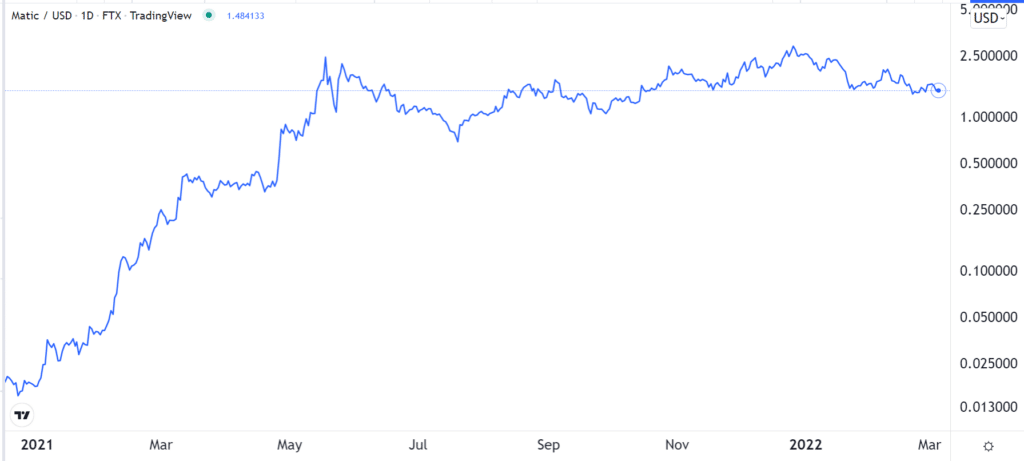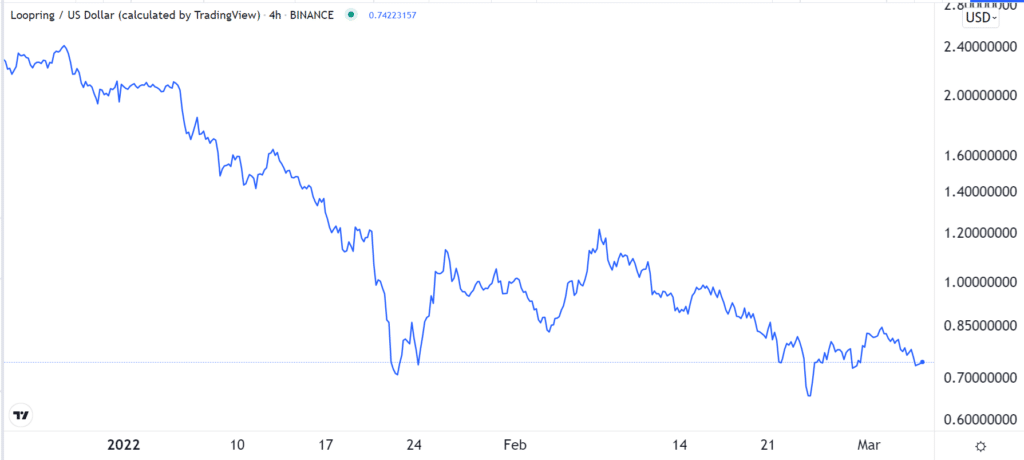
Blockchain projects have come a long way in the past decade or so. Today, all cryptocurrencies are valued at over $2 trillion, and analysts expect that this growth will continue in the next few years. At the same time, other industries like metaverse, non-fungible tokens, NFT, and decentralized finance (DeFi) have come up.
As a result, there is a constant need for more speed, lower costs, and better efficiency. This is where layer 2 blockchains come in. In this article, we will look at what layer 2 blockchains are, how they work, and some of the top examples.
What is a layer 2 project?
To understand what a layer 2 blockchain project is, we need to look at the past three generations of the cryptocurrencies industry. In the first generation, Bitcoin was the main coin, and its role was to help people simplify payments and how to send money to one another.
The second generation made the industry better by introducing the concept of smart contracts. What joined the first and second generations was the fact that the blockchain networks were built using a proof-of-work (PoW) technology that is known for being slow, energy inefficient, and expensive.
The third generation of the industry relied on a proof-of-scale technology, which made the projects significantly faster, energy-efficient, and more scalable.
Since the second generation, Ethereum has become the most popular platform in the world. Indeed, it has been used to build most of the blockchain solutions that exist today, like Aave, Uniswap, and Curve Finance. While it is popular, users of apps built using Ethereum complain about the high cost and slow speed of transactions.
Therefore, realizing that Ethereum is the dominant player in the industry, developers decided to come up with solutions to scale apps built using the network. These tools are known as layer 2 blockchain networks and are becoming significantly popular.
How layer 2 networks work
The networks help simplify and supercharge apps built using Ethereum by processing transactions of the mainnet while still maintaining the security features that Ethereum is known for. In other words, they act as sidechains.
Broadly, there are two main types of layer 2 networks. First, there are networks known as optimistic rollups, which work by assuming that transactions are valid by default. As a result, it runs computation through a fraud-proof technology.
The other type of layer 2 networks are known as zk rollups. In this case, zk stands for zero-knowledge and is a technology that is divided into transactors and relayers. A transactor creates and broadcasts transaction data to the network while relayers are responsible for collecting transactions.
Therefore, in general, layer 2 networks serve three key functions. First, they help to increase the speed of transactions in a network. For example, while Ethereum handles less than 20 transactions per second, some layer 2 networks supercharge this to over 2,000 tps. Second, they lower the cost of transactions. For example, while the average cost of an Ethereum transaction is over $20, they reduce it to a few cents. Further, they help to maintain security by ensuring that data and proof of transactions remain in the same layer.
Examples of layer 2 networks
In the past few years, developers have been at work building layer 2 projects. Their belief is that while the number of smart contract layer 1 projects is increasing, Ethereum is in a pole position and that it will continue to dominate the industry. So, here are some of the most popular layer 1 projects.
Polygon
Polygon is the biggest layer 2 network in the world. The network has been embraced by some of the leading Ethereum developers. Indeed, data suggests that over 7,000 developers are building using the network, and the number is increasing.
Polygon, which was previously known as MATIC, has become so popular that it has attracted venture capitalists. In 2022, the developers raised $400 million from a group led by Sequoia and Softbank. They will use these funds to expand their network and incentivize developers.
Polygon has a presence across all industries, including NFTs, DeFi, and the metaverse. Some of its biggest networks are Aave, QuickSwap, Curve, and SushiSwap. In total, its network had a total value locked (TVL) of over $3 billion in March 2022. That was a significant drop from its all-time high of over $10 billion.

Polygon plans to improve its network by introducing new solutions like Polygon Avail, Polygon zero, Polygon Miden, and Polygon Nightfall.
Immutable X
While Polygon focuses on all areas in the blockchain industry, some layer 2 networks have a narrower scope in nature. For example, Immutable X is a blockchain network that helps scale projects in the Non-Fungible Token (NFT).

The goal of the network is simple. Developers use it to scale their Ethereum projects and, as a result, speed up the process. It also lowers the cost of transactions in the network, which makes these platforms more attractive for buyers. The chart above shows the performance of the IMX token.
Loopring
Loopring is a layer 2 network that helps to scale the trading environment. Instead of using decentralized exchanges built on Ethereum and paying high costs, one can use its optimized network. Loopring uses the zero-knowledge process to scale its trading ecosystem by batch-processing thousands of requests off-chain.

As a result, traders pay a few cents per transaction instead of a few dollars. The chart below shows the performance of the LRC token.
Summary
Layer 2 networks have become popular among developers and users. However, they will be put to the test once Ethereum completes the merge, which will make it a faster platform. Once this happens, there is a likelihood that many developers will opt to remain in Ethereum’s mainnet instead of having two platforms.








Leave a Reply